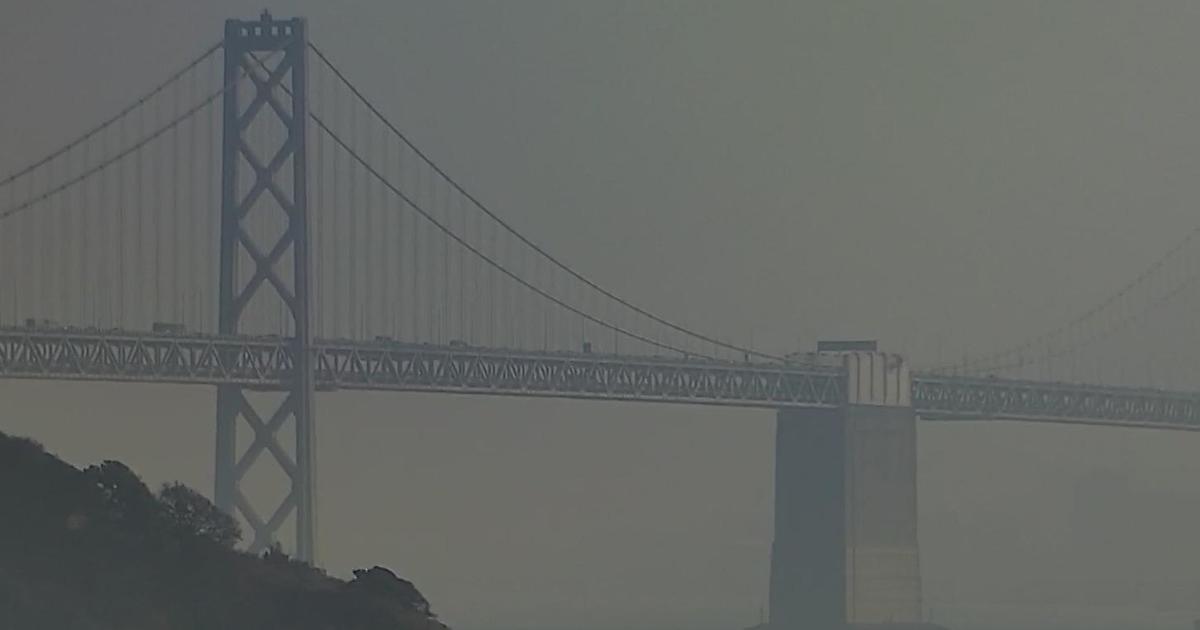Storm Systems Building In Pacific; Potent Atmospheric River Bearing Down On Bay Area
SAN FRANCISCO (CBS SF/BCN) -- A wave of storm fronts were lined up across the Pacific early Tuesday, a procession of much needed rain showers, ushering in a potent atmospheric river late this weekend to bring relief to the drought-stricken San Francisco Bay Area.
Wind gusts were expected to accompany the rain by Tuesday evening, prompting the National Weather Service to issue a Wind Advisory that will be in effect from 8 p.m. until 4 a.m. Wednesday.
KPIX 5 Weather Center: Current Conditions, Maps, Forecasts For Your Area
Southerly winds will increase during the night, with gusts of up to 45 mph possible and gale force winds forecast above the waters in the region, according to the weather service.
The North Bay will likely see the most rain from the storm, with up to 2.5 inches in the mountains. The rest of the Bay Area could see as much as 1.5 inches in some places, forecasters said.
The heaviest rain is expected to move through the region quickly although showers will linger in the morning hours. More rain is then expected Thursday, as well as a third storm and possible "atmospheric river" on Sunday, according to the weather service.
"Unseasonably cool and unsettled weather conditions continue through the upcoming weekend," the National Weather Service said. "Rain returns to the region late Tuesday into Wednesday with another system arriving Thursday into Friday. A more potent storm system looks to arrive late in the upcoming weekend with more widespread rainfall."
Storm Preparations: Tips To Be Ready For This Week's Stormy Weather
The forecast was warmly greeted by Bay Area residents who have grown weary of water use restrictions and the wildfire dangers lurking in the parched, tinder-dry hills brought on by months of extreme drought.
"All we have had is fire, after fire, after fire," Concord resident Casey Caster said. "Plus all the reservoirs are drying up. We got nothing. There's hope, praise God we got hope."
Liz Lewis, Marin County's Water Resources manager, said if you think you might need sand bags, the best time to get them is before the rains arrive.
"If you live in a low-laying area and think you are going to need sand bags, go out and get those today," she said. "With the drought, we'll be watching the winds carefully because we know our trees are drought stressed."
Unlike a typical calendar year, the water year for California begins on Oct. 1 and the most recent season the drought-stricken region left behind was one of the driest on record.
Marin County officials offer storm preparation tips
According to the National Weather Service, normal rainfall for Santa Rosa from Oct 1-Sept 30 is 36.28 inches. Over the most recent rain year, the area received just 13.01 inches or 39 percent of normal.
For San Francisco, those totals were 23.65 inches for a normal year and just 9.04 inches fell during the 2020-2021 water year. It was the second-driest on record dating back over 170 years.
San Jose would be at 14.90 inches normally with just 5.32 inches falling.
That could all begin changing this week.
"The Storm Door is officially open," the weather service tweeted. "A series of wet systems are expected to impact the region throughout the week and into the weekend. Still some uncertainty in the long term, but more rain is on tap."
A weaker, but still wet, front was expected to roll into the Bay Area later Tuesday.
Forecasters said rainfall amounts from late Tuesday through Thursday look to range from 2.50"-3.50" across the North Bay Mountains, 1.50"-2.00" across the North Bay Valleys, 1.00"-1.50" in the Santa Cruz Mountains, 0.25"-0.75" for much of the greater San Francisco Bay Area and Santa Lucia Mountains, and generally less than 0.25.
La Honda, Santa Cruz Mountains Residents Hope Rain Will Bring Relief From Fire Danger
The news was even more encouraging for the Sierra. A Sunday storm dumped 10 inches of snow in the upper elevations according to the UC Berkeley Central Sierra Snow Lab.
Several feet were expected over the next six days.
Officials said 3-5 inches of snow fell across the Caldor Fire burn zone, all but extinguishing the smoldering embers of the blaze that burned 221,775 acres and destroyed hundreds of homes.



